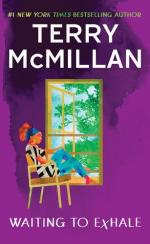|
This section contains 4,786 words (approx. 16 pages at 300 words per page) |

|
SOURCE: "The Best of Everything," in New York Review of Books, November 4, 1993, pp. 33-7.
In the following excerpt, Pinckney praises the sincerity, force, and humor of Waiting to Exhale and discusses the novel's place within contemporary African-American literature and culture.
Fannie Lou Hamer once said that she didn't want to be liberated from men. Her husband was, after all, six foot-two. There was a time, only two decades ago, when many black women looked at the women's movement as a middle-class white concern, a passing political fashion, or argued that black women and white women wanted very different things. No one, they pointed out, expected white women to express solidarity with white men. For black women as black people the real struggle was elsewhere, and it might prove endless. Though Toni Cade Bambara's anthology, The Black Woman (1970), discussed the "double jeopardy" of being both black and female, the...
|
This section contains 4,786 words (approx. 16 pages at 300 words per page) |

|


